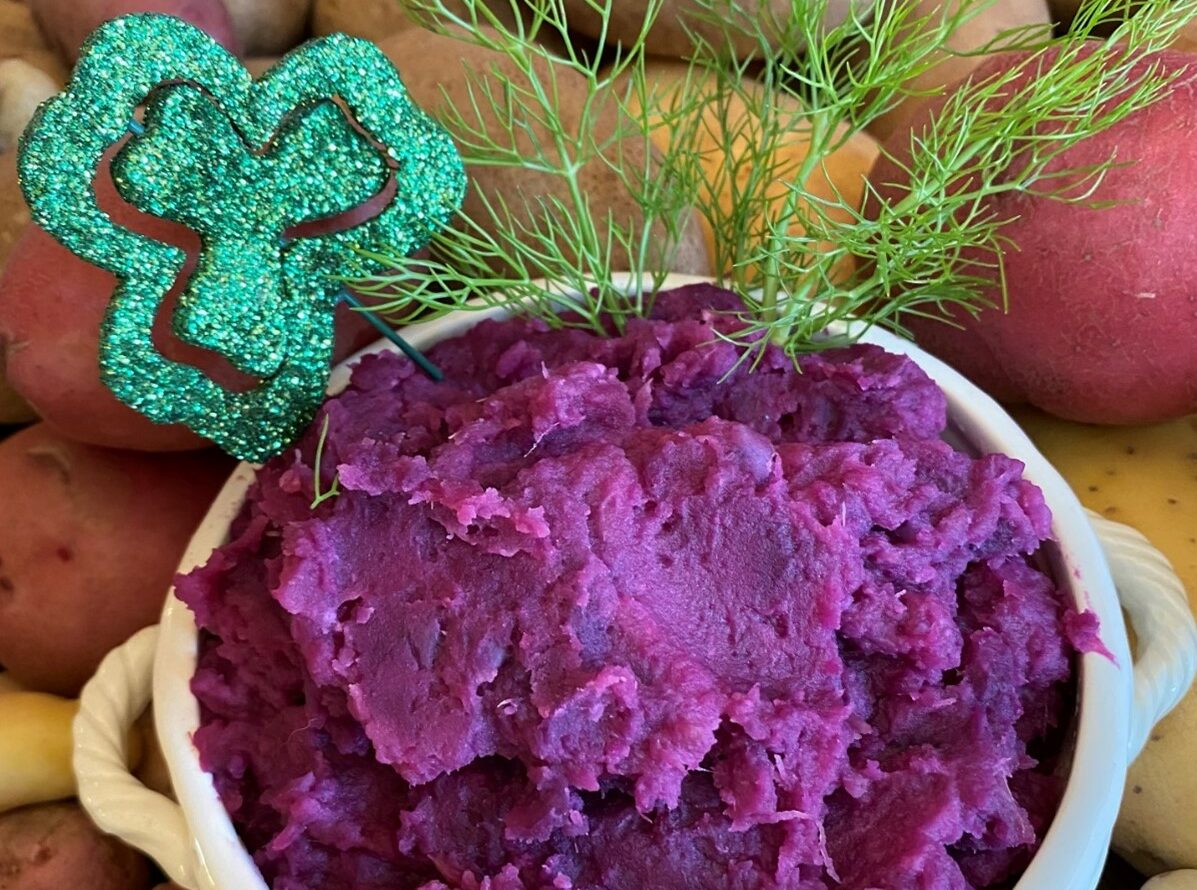Keep your eyes peeled for colorful St. Patrick’s Day spuds

COLUMBIA, Mo. — It’s no blarney. Potatoes are a staple for St. Patrick’s Day meals, along with corned beef, cabbage and soda bread.
The Irish (white) potato has long been associated with the potato famine in Ireland during the 1840s, says University of Missouri Extension horticulturist Michele Warmund. Late-blight disease, the source of the great potato famine, triggered widespread starvation and mass migration out of Ireland. Today, however, there’s no shortage of different types of potatoes for sale at the local grocers or grown in the home garden for colorful, tasty dishes.
Purple and blue potatoes originated from Peru and Bolivia and were imported into Europe in the 16th century. Spanish sailors ate purple potatoes to prevent scurvy on long voyages. Purple potatoes generally have earthy, sweet and nutty flavors.
For the adventurous gardener, potatoes can be grown in 10- to 15-gallon containers in a soilless potting mix or well-drained, loamy soil with a pH of 5.3 to 6.0. Perform a soil test before planting to see if there is a need to amend the pH and or add fertilizer. If needed, add a 5-10-10 fertilizer or a similar product at the recommended rate in a band about 6 inches deep before planting. When the tubers begin to develop, apply more fertilizer to increase size and yield, following soil test recommendations.
Buy certified seed potatoes from reputable local or online sources. Seed potatoes are generally available for purchase and shipping in mid-April in Missouri. Before planting, cut each seed potato into 1- to 1.5-inch pieces, with at least two “eyes” per piece.
Plant when the soil temperature is consistently above 45 F, usually around mid-April in Missouri. Plant seed pieces 2-3 inches deep and 12 inches apart in a sunny location. In the garden, space rows 30-36 inches apart.
About two to three weeks after planting, plant growth from the seed pieces emerges from the soil surface. When plants become 6-8 inches tall, mound the adjacent soil up about 4 inches, covering the base of plants to keep light from shallow developing tubers, which causes greening. As plants grow, continue to hill up the soil until mounds are about 12 inches high.
Water during dry periods to encourage uniform tuber development. Apply mulch in the summer around the base of the plants to minimize weed growth, conserve moisture and cool the soil. Hoe shallowly when weeds are small to prevent injury to developing tubers.
Generally, harvest small “new” potatoes seven to eight weeks after planting, while vines are still green. Lift the tubers with a potato fork or a garden spade, taking care to avoid injuring the tubers. Discard tubers with cuts, bruises or diseases, or remove the blemishes and use the potatoes immediately. After harvest, brush off the soil and allow the skins to dry before storing them in the dark to prevent greening. For larger tubers, leave them in the ground for two weeks after the vines have died back. Potatoes can be stored for a few months in a refrigerator at 90% relative humidity in complete darkness. Tubers will sprout if stored at 45 F or above after digging.
Colorado potato beetles, flea beetles, aphids and leafhoppers are the most common insect pests of potato foliage. Use lightweight, spun-bonded row cover, permeable to light, to keep pests from plants. Potato scab is a bacterial disease that afflicts susceptible cultivars grown in alkaline soil.
Miss Clipping Out Stories to Save for Later?
Click the Purchase Story button below to order a print of this story. We will print it for you on matte photo paper to keep forever.

